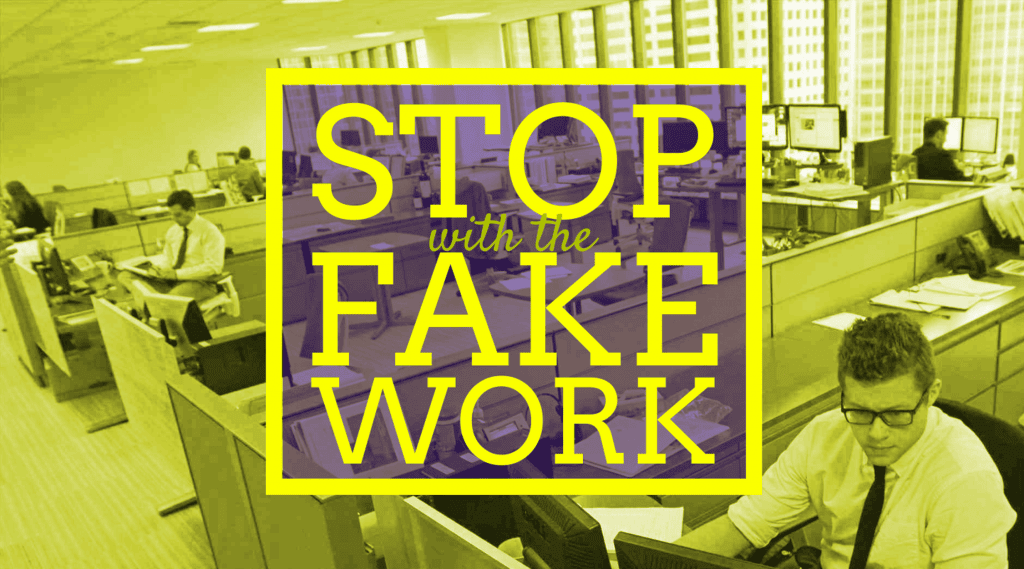Have you seen the story about remote workers using ‘mouse moving techniques’ to appear like they are working while they do other things – I suppose like anything except work? Its been in the media of late and here is one take from the folks at SmartBrief – they go after it from an engagement perspective:
Fair enough. Certainly using subterfuge to fake work activity is a sign of low engagement, the equivalent of ‘looking busy’ in the now old days of physically showing up, in office jobs at least.
I’d like to hit this topic from a different angle: understanding what the work actually is. Having had early exposure to manufacturing and distribution in my career, a world in which the physical reality must be managed, I saw how work is actually studied and structured. There used to be a practice of job analysis: industrial engineers were used to organize work. Sometimes it wasn’t fully accurate, but you get the idea: after a study and some analysis, a conclusion like this would be made: ‘we need 10 machine operators, one forklift operator, 2 mechanics and a clerk to run this part of the factory’. After that there would be ongoing tweaks.
So my question to the universe goes something like this: Does anyone know what these workers who can fool their bosses with mouse moves should be delivering and doing to begin with? Do their bosses have an opinion?
One of my realizations that modern work might include lots of fake work was when Elon Musk fired more than half of the Twitter workforce and nothing negative seemed to happen in the immediate aftermath. Everything kept running. You may hate Elon and this is not an opinion piece on him. That situation begged the question as to what all those people were doing, what were their deliverables and what outcomes were being managed? I asked several colleagues what would happen if we had to fire 50% of our workforce? As a manufacturer the answer was more clear for us: disaster. Maybe you could get away with it in the HQ for a while, but certainly not in the factories and DC’s.
Is it possible that in our modern workplace we have drifted away from real work analysis and understanding of what needs to be done, specifically, on a daily basis? Do we know what the units of work are for our modern ‘knowledge workers’?
I managed a team of diverse HR professionals for many years. They ran the gamut from compensation analysts to labor negotiators. Most had a sense of urgency and we accomplished many noteworthy things so I never felt the need to go deep on work activity. I overemphasized outcomes and that seemed enough. But was it? How much space was there in between outcomes?
As we did any number of restructures over the years in the various parts of the very large institution I was part of, I always took note that in the aftermath, the work load impact of the departures on the remaining people was far less dire than had been predicted. This speaks to ‘Parkinson’s Law’, an old principle that ‘work expands to time available’. There are natural inaccuracies in the time allotted for people to do work; its unavoidable.
In any modern office job, there are activities and tools we all see. meetings, spreadsheets, powerpoints, etc. Knowing what is essential and deliverable is the job of good managers. Lots is written about good leaders, but good managers may not be getting their due these days. Good managers know what a good customer service rep should be doing and delivering. They know what their crew of financial analysts should be analyzing, how long it should take and what the output looks like. They know what marketing trainees should be learning and practicing and how to evaluate the quality of the work, to include the detection of AI/Chat GPT if authorized or not. They know how long activities should take and know when to intervene if they suspect an issue.
Pro Tip: if you are a manager of any type of professional, it may be time to start getting direct knowledge of what it takes to deliver the work of your area. don’t be overbearing about it, but start asking more questions about how your direct reports got things done. You may even end up appreciating them more. And you wont come across like this guy. Remember him?
It is time for industrial engineers and job analysis to make a return to the HR departments of the modern workplace. I am retired and on to other things but I did realize toward the end of my big company tenure there were too many managers more interested in their next move than their actual work product. That’s not a criticism of them; that was on me and my fellow leaders, and our company was/is a consistent high performer. We’d started to scrutinize headcount requests much more diligently than previously and had stressed that work evaluation and capabilities reviews should be constant. If you suspect that Parkinson’s Law may be a factor in your organization, it might be time to look at work activity in a way that may get you accused of micromanaging. Don’t do it in a way that alienates your people. Involve them. The alternative is presiding over a workforce that can fool you with mouse clicks. How embarrassing!


